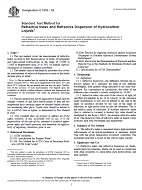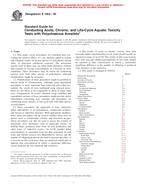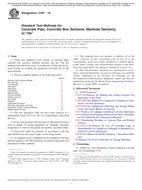1.1 This descriptive nomenclature provides brief descriptions of some of the more common, or more important, natural materials of which mineral aggregates are composed (Note 1). The descriptions provide a basis for understanding these terms as used to designate aggregate constituents. Many of the materials described frequently occur in particles that do not display all the characteristics given in the descriptions, and most of these rocks grade from varieties meeting one description to varieties meeting another with all intermediate stages being found.
Note 1-These descriptions characterize minerals and rocks as they occur in nature and do not include blast-furnace slag or lightweight aggregates that are prepared by the alteration of the structure and composition of natural material. Blast-furnace slag is defined in Definitions C125. Information about lightweight aggregates is given in Specifications C330, C331, and C332.
1.2 The accurate identification of rocks and minerals can, in many cases, be made only by a qualified geologist, mineralogist, or petrographer using the apparatus and procedures of these sciences. Reference to these descriptions may, however, serve to indicate or prevent gross errors in identification. Identification of the constituent materials in an aggregate may assist in recognizing its properties, but identification alone cannot provide a basis for predicting the behavior of aggregates in service. Mineral aggregates composed of any type or combination of types of rocks and minerals may perform well or poorly in service depending upon the exposure to which they are subjected, the physical and chemical properties of the matrix in which they are embedded, their physical condition at the time they are used, and other factors. Small amounts of minerals or rocks that may occur only as contaminants or accessories in the aggregate may decisively influence its quality.
Product Details
- Published:
- 08/10/1998
- Number of Pages:
- 10
- File Size:
- 1 file , 81 KB


